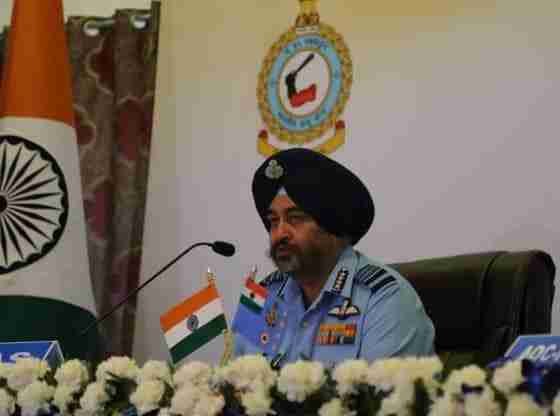Indian air strikes on Pakistan: What happens next?
Those who question the truth behind the Indian air force’s spectacular air strikes on terror camps deep inside Pakistan are unable to explain why Pakistan’s reactions were full of confusion and contradictory statements – including those of Prime Minister Imran Khan – just as they were after the US raid on Abottabad. The sheer audacity of the Indian air strikes left Pakistan’s brass hats particularly stunned.
With the exception of the commando raids across the Line of Control (LOC) in Kashmir in 2016 that came to be known as ‘surgical strikes’, the inaction by India against several Pakistan-sponsored terror strikes over the past three decades had lulled Pakistan’s military establishment into believing that ‘war was not an option’ for India, since it could escalate into a nuclear confrontation. However, India’s air strike has now blown a hole through Pakistan’s article of faith that its nuclear arsenal was a protective shield against all its adventurism on Indian soil.
With hindsight, there is reason to believe that Delhi’s reluctance to respond with military force either after the Jaish-e-Muhammad attack on the Indian Parliament in December 2001 and the massive military mobilisation thereafter, or the Lashkar-e-Toiba attack on Mumbai in November 2008, had further emboldened Pakistan’s military hawks. Even during the Kargil conflict (1999), Indian Prime Minister Atal Bihari Vajpayee made sure the armed forces respected the sanctity of the LOC, even though Pakistan has repeatedly shown that it does not do so.
Had Mr Vajpayee (in 2001) or Dr Manmohan Singh (in 2008) given India’s armed forces permission to respond along similar lines to those recently ordered by Narendra Modi after the Pulwama attack in February 2019, at least with air strikes on Pakistan’s terror machinery in Pakistan-occupied Kashmir (POK), then Pakistan would have had to rethink its strategy of using terrorism as an extension of its foreign policy.
Although India’s ‘strategic restraint’ at the time did get New Delhi universal applause, many more Indian lives were lost into the bargain. This inimical guarantee of India’s reluctance to cross the self-imposed restriction gave immunity to the Pakistani ‘deep state’ to continue to bleed India.
The Indian air strikes on Balakot have changed that narrative forever. They have blown a hole through Pakistan’s nuclear umbrella of pushing terrorists into India and using their so-called jihadi soldiers to keep India on the back foot while the Pakistani armed forces strutted about their country as the ‘guardians of the state’. This blackmail has held out for three decades, even after thousands of Kashmiris and Indian soldiers became victims of Pakistan’s ‘proxy war’ to wrest the Kashmir Valley from India.
The air strikes on Balakot can also be credited with at least two other ‘firsts’: it is perhaps the first time that a nuclear-armed country has resorted to the use of air power against targets in the territory of another nuclear-armed country; and then there is the downing of a Pakistani F16 fighter jet by a vintage 1960s model MiG 21 fighter.
This last has stunned the West and the American arms lobbies that were hoping to push India into a deal to buy upgraded F16s. Hence their silence and denials about the F16 being used by Pakistan a day after the Indian air strikes as a face-saving attack an Indian military brigade headquarters near the LOC. India’s swift response led to the F16 being shot down in aerial combat.
Pakistani denials are both to save face at home and to pacify the United States, which apparently needs to give permission for the use of its equipment against another US-friendly country. The question India might therefore want to ask itself is who New Delhi could use the US$15 billion worth of military arms and platforms against that it has recently bought from the US?
The assumption that China would come out in support of Pakistan militarily if India were to respond with military action – after having exhausted all other diplomatic, economic and geopolitical options – is misplaced.
What makes Pakistan even more nervous is what India could do next. Hence the former’s excessive use of drones to keep a watch on Indian troop movements along the border since the briefing by the Indian military at which the missile parts of the Pak F16 were displayed. New Delhi has made it known that India’s forces are ready to respond beyond the LOC with mechanised forces (tanks and armoured fighting vehicles), and that the Indian navy is prepared at various levels too. It should be noted that with a nuclear-powered submarine, India’s nuclear triad is now in place, which gives Pakistan little room for manoeuvre.
Unlike India, Pakistan’s options are limited yet also predictable: the Pakistani army has followed virtually the same plan every time, which envisages the use of irregular forces – a model first fine-tuned by General Ayub Khan in the 1960s – before launching regular troops led by army officers into India in order to wrest the Kashmir Valley from India. This is what Pakistan’s army did in the 1947 and 1965 wars, and during the Kargil conflict, and it’s what it has done throughout the years in Jammu and Kashmir (J&K) in the hope that the ground will be readied for the regular troops finally to roll in.
In the mid-1980s Pakistan’s military establishment, led by General Zia-ul-Haq, concluded that it was impossible for Pakistan to win a conventional war against India or even to liberate parts of Kashmir to fulfil the long-standing ambition to avenge Pakistan’s humiliation after the fall of Dacca in 1971 and the large-scale surrender of the Pakistani Army.
The only other way Pakistan could ‘do a Bangladesh’ on India was to go beyond the established military narrative of fighting a conventional war as in 1965 and 1971. This was General Zia’s plan, named ‘Op-Topac’, which he had unveiled just before his death in 1988, and it has become the basis of Pakistan’s longest running military operation in J&K. It aims to annex the Kashmir Valley through insurgency, alienation of the locals and radicalisation, backed up by a military invasion.
The strategy of the Pakistani military establishment has been to bleed India through cross-border terrorism, and to tell India and its leaders that if the Indian military response did push Pakistan into a corner, then Pakistan would not hesitate to use all its nuclear bombs. In recent years this threat has been widened to include the potential use of tactical nuclear weapons – which cover a limited area of just a few kilometres – if Indian troops were to advance deep into Punjab, the country’s strategic heartland and home to most of Pakistan’s generals and its army.
Various studies and war gaming over the past decades in overseas think tanks have confirmed that the military brass of both India and Pakistan are very unlikely even to consider the use of their nuclear arsenal at the height of a military confrontation, as the Kargil conflict showed. Moreover, war is a costly option, and Pakistan’s generals know that the cost to them would be unbearable.
While the Kargil conflict cost an estimated Rs 5000 a week, a war today would cost each side about Rs 6000 (US$1 billion dollars) a day. Thus a week-long military campaign would wipe out all that there is in Pakistan’s foreign exchange reserves! Nonetheless, for India, such a price to finally put Pakistan’s generals out of the terror business might just be worth it.
However, for Pakistan, the annexation of Kashmir – through whatever means – is its long-standing ambition, not only as an article of faith and a binding adhesive for a country that is so deeply rooted and tutored in anti-India narratives that nothing short of the absorption of the Kashmir Valley will be acceptable to its public now. More than Kashmir itself, it is the waters of the Indus River and its tributaries that are the real prize that Pakistan’s policy-makers have always had their eyes on.
Pakistan is hugely dependent on the waters of the Indus river system. Recognising this vulnerability, India’s Prime Minister Jawaharlal Nehru signed a heavily one-sided Indus Waters Treaty with President Ayub Khan of Pakistan in September 1960, which gives Pakistan 80 per cent of the waters of the Indus and its tributary rivers. Nonetheless, Pakistan still complains of being squeezed by India, which hasn’t even effectively used the 20 per cent of the waters that are its due. Now, however, following the Pulwama attack, the Indian government has finally announced its intention to do that at least, hoping this might put pressure on Pakistan to mend its ways.
The waters of the Indus river system are not only important for Pakistan, but also for China, which has now begun building huge dams on the Indus in POK. China’s strategic goal is eventually to be the most powerful country in the world, or at least on a par with the United States. And the way it intends to achieve this is through the ever-increasing production of microchips that already control everything from mobile phones to pacemakers and geo-stationary satellites.
To produce these in abundance, China needs enormous amounts of water – a 30cm silicon wafer requires almost 10,000 litres of fresh water for its production – and China plans to get this from the huge dams it is now building on the Indus in POK as part of the China-Pakistan Economic Corridor (CPEC). This is China’s strategic gateway via POK and Pakistan into West Asia and Africa. China occupies more than 25 per cent of the territory of J&K and therefore is now party to the dispute over Kashmir. No wonder that Beijing still gives Pakistan the diplomatic support it needs, especially in the UN.
However, the assumption that China would come out in support of Pakistan militarily if India were to respond with more military action – after having exhausted all other diplomatic, economic and geopolitical options – is misplaced, even though China has made major investments in Pakistan through the CPEC and in Gwadar port, as well as with a few large dams on the Indus in the northern areas of POK.
China has always been careful not to go against the vast tide of international opinion beyond a certain point, unless its own agenda is being challenged, as in case of the South China sea. No wonder then that it has given its consent to a broad UN Security Council admonishment of Pakistan and its terror apparatus. Even in the past China did not intervene in Pakistan’s favour during the 1965 or 1971 Indo-Pakistan wars, nor during the Kargil conflict, and it may not do so now. Nonetheless, India’s long-term counter-terrorism strategy needs to build in diplomatic and trade sanctions to penalise China, which currently enjoys many trade benefits in the Indian market.
Neither the Indian air strikes nor pressure such as the threat of pulling out of the Indus Waters Treaty will be able to discipline Pakistan immediately. Islamabad’s weakest pressure point is its current economic plight, and it is looking to the International Monetary Fund (IMF) for financial bailouts, despite grants from China, Saudi Arabia and UAE, all of which enjoy leverage over Pakistan. The Chinese and the Saudis have strong ties with Pakistan’s military establishment, which is the main culprit in creating, nurturing and sponsoring terrorism against India as well as in Afghanistan and Iran.
Therefore, to clip the generals’ wings, an Indian diplomatic drive against Pakistan must seek to stall any aid to this rogue state and to convince the world to tighten the noose around Pakistan’s generals and all their vested interest in Pakistan and abroad, such as in the US and UAE. Unless this is accomplished with sufficient vigour, Pakistan’s generals – like those of Myanmar – will continue to prosper while their country slides deeper and deeper into a dark hole. India cannot do this alone, even if it resorts to another set of air strikes.



